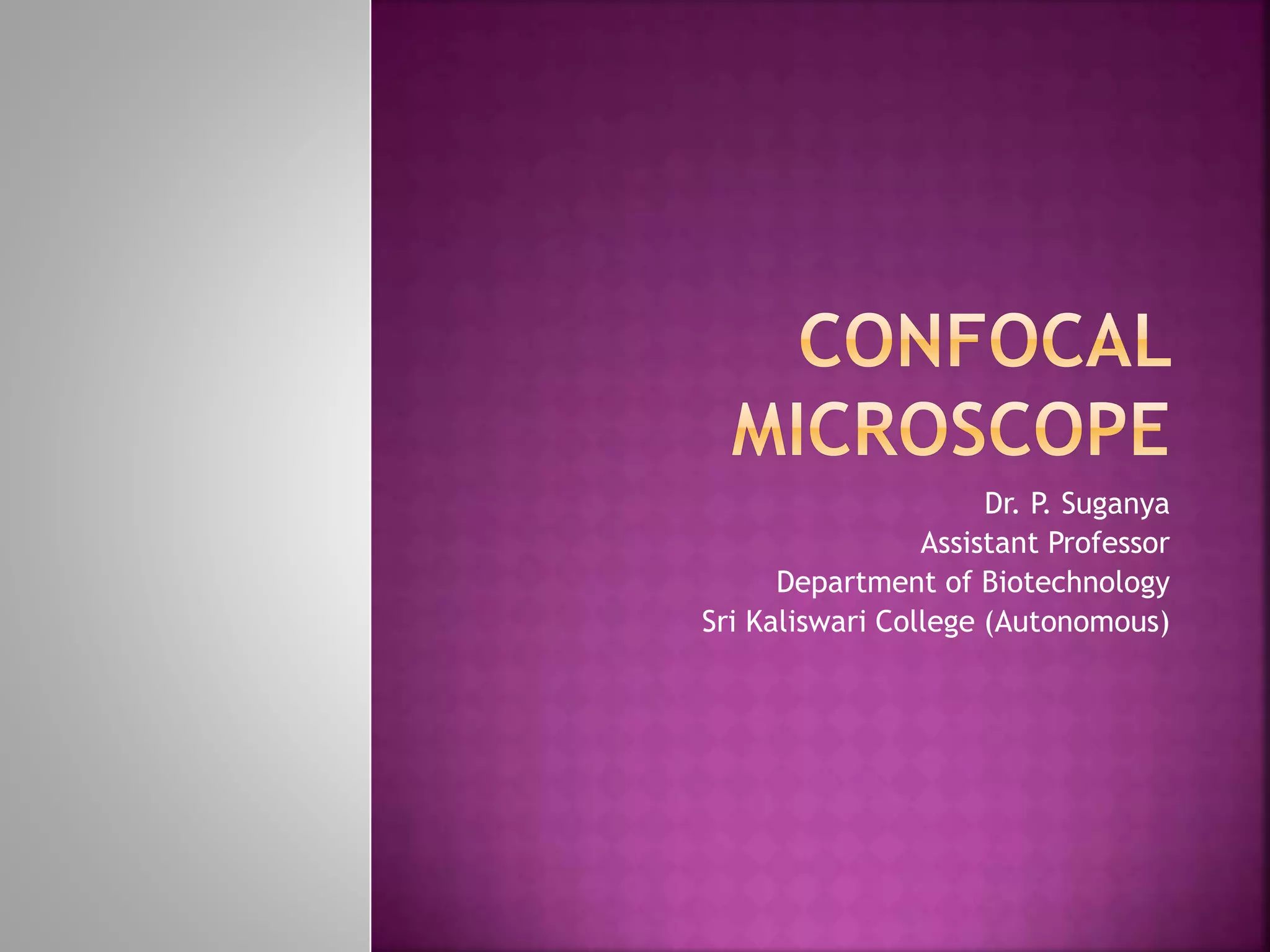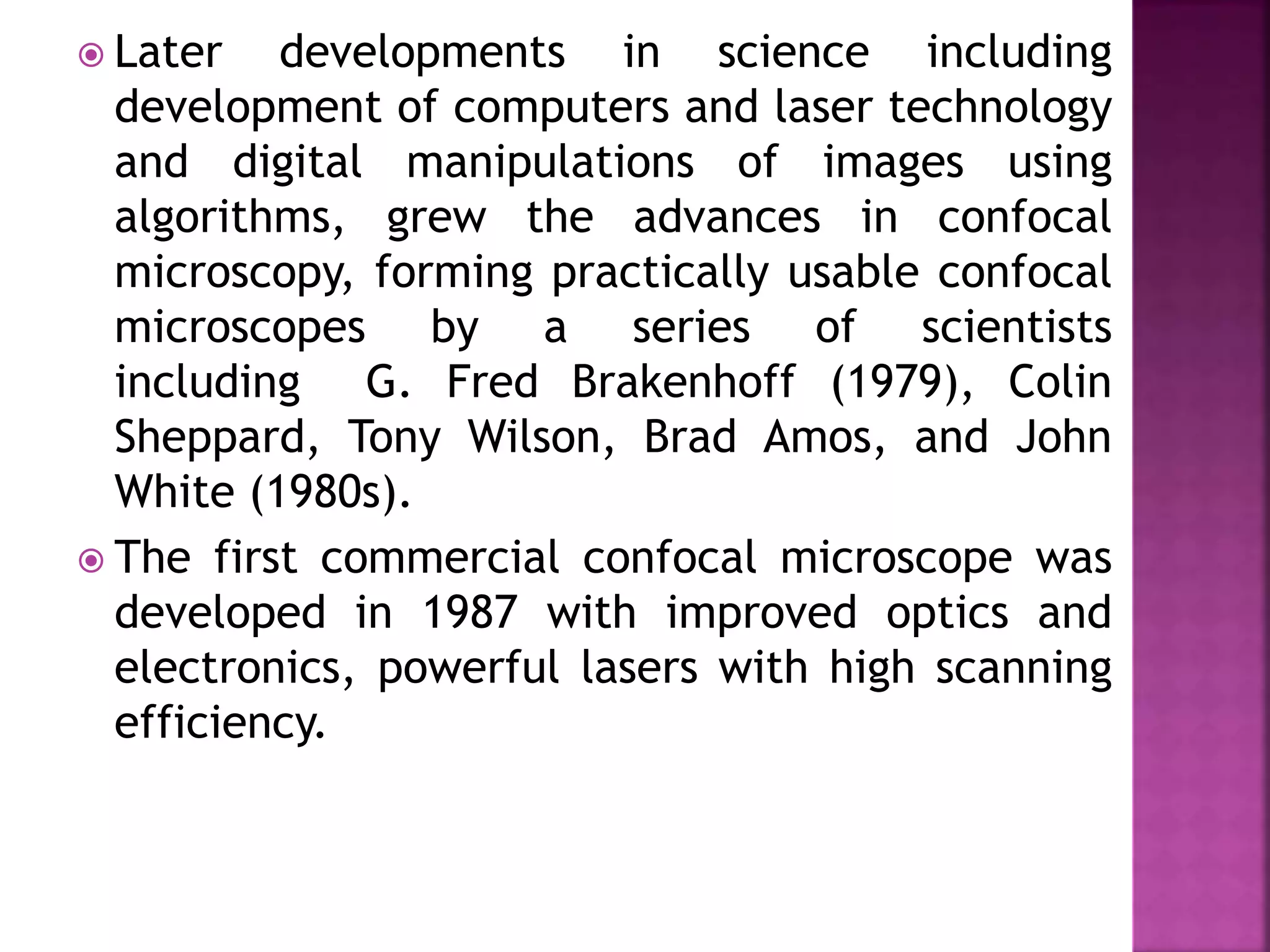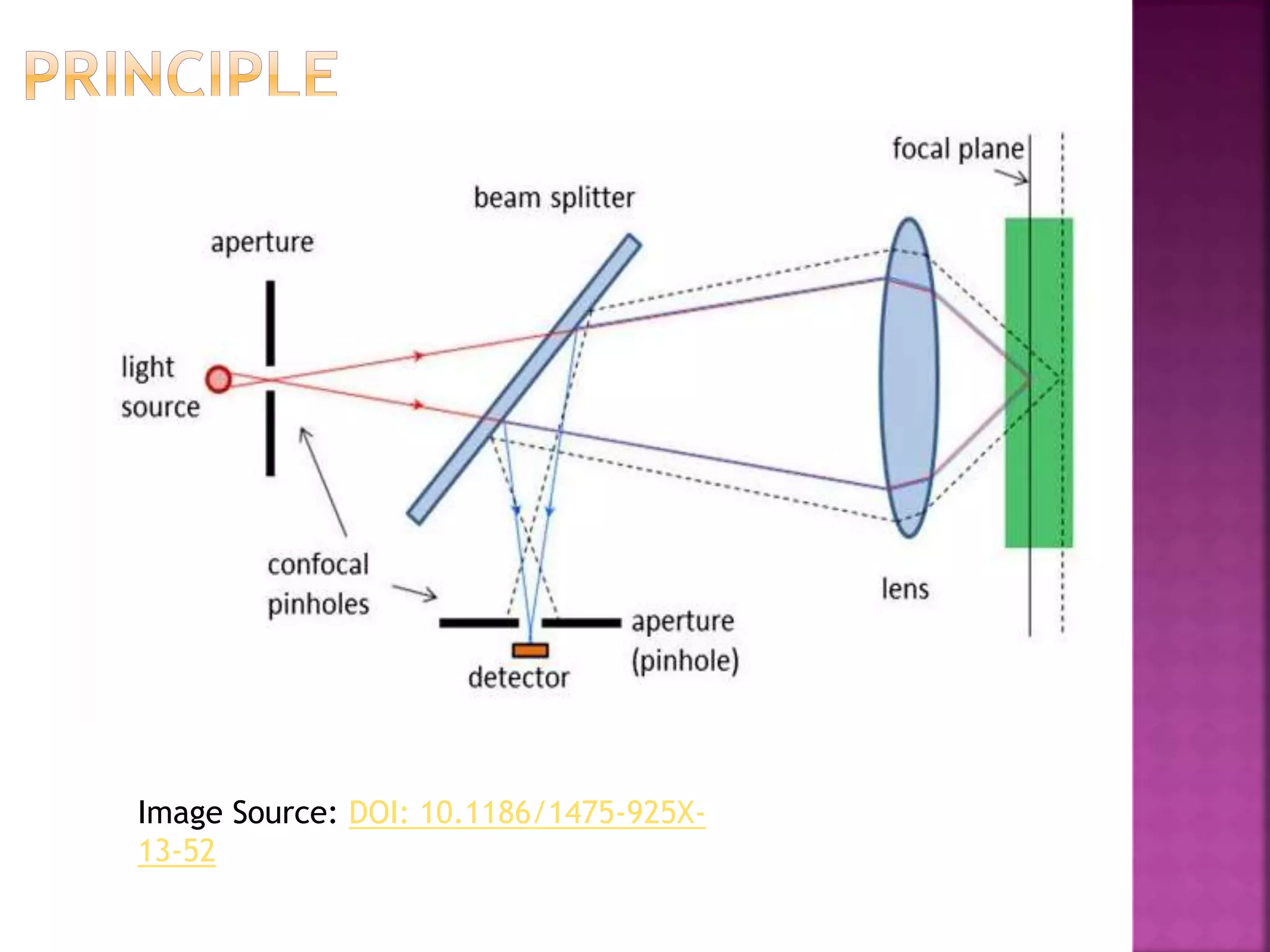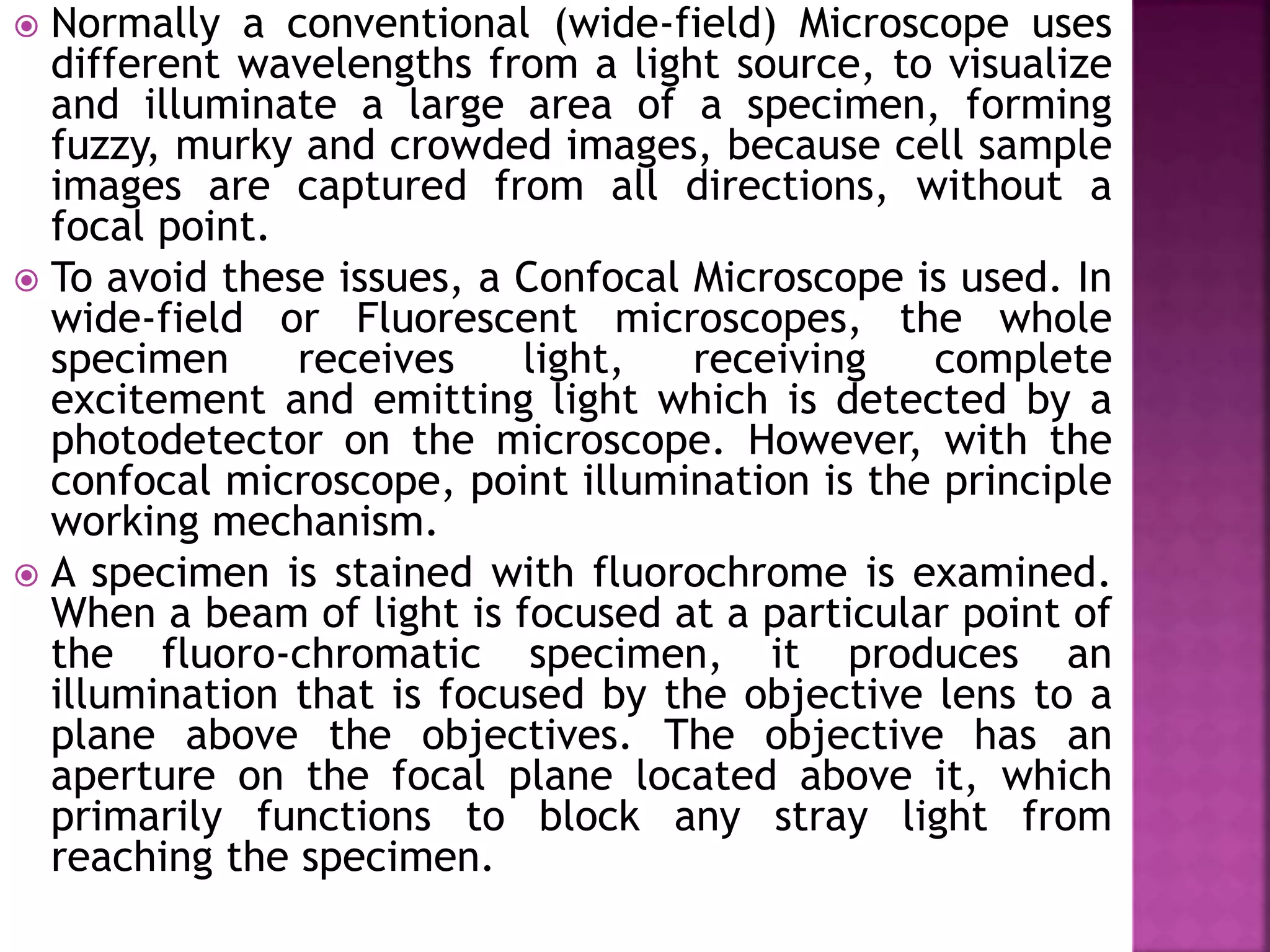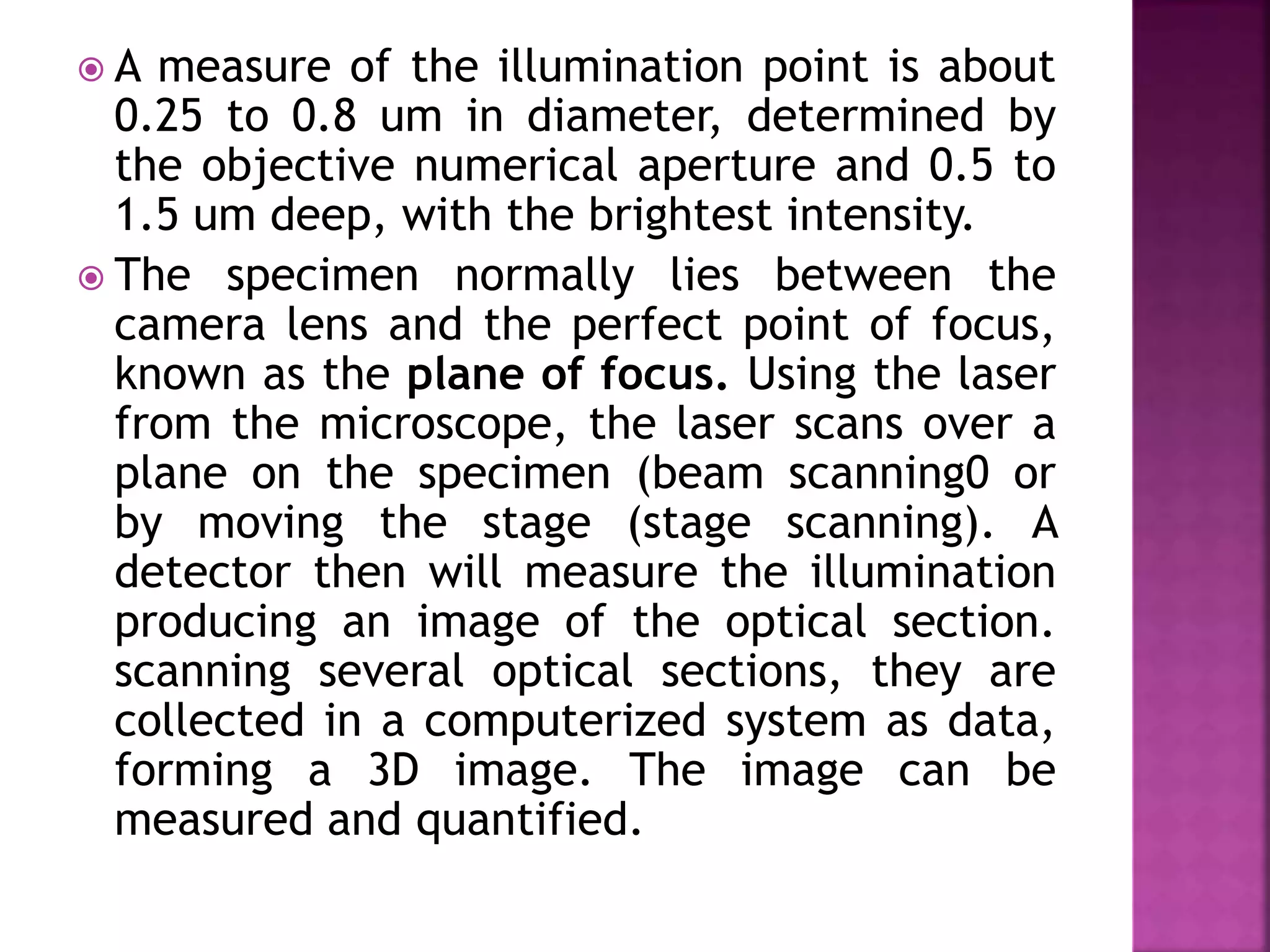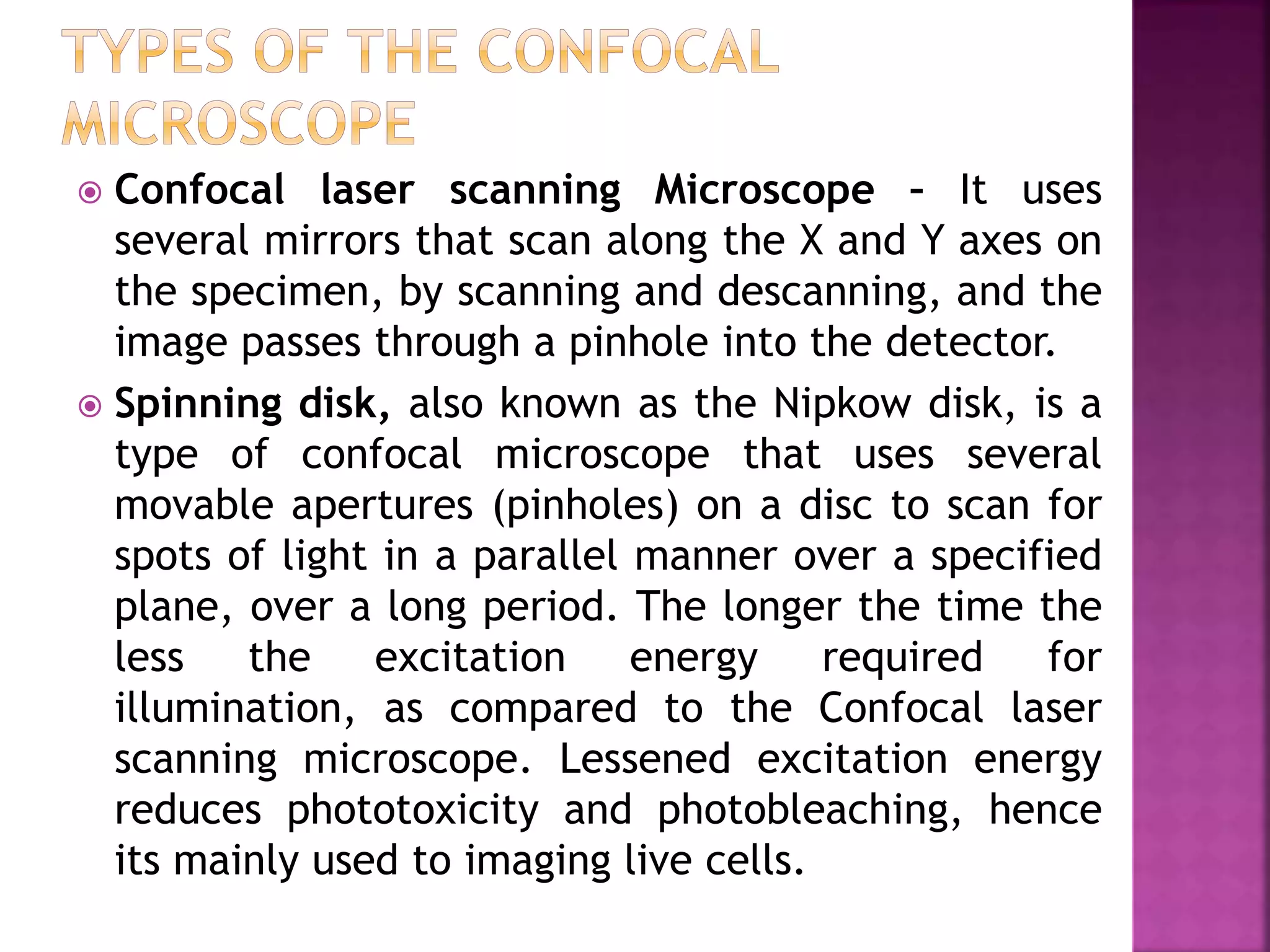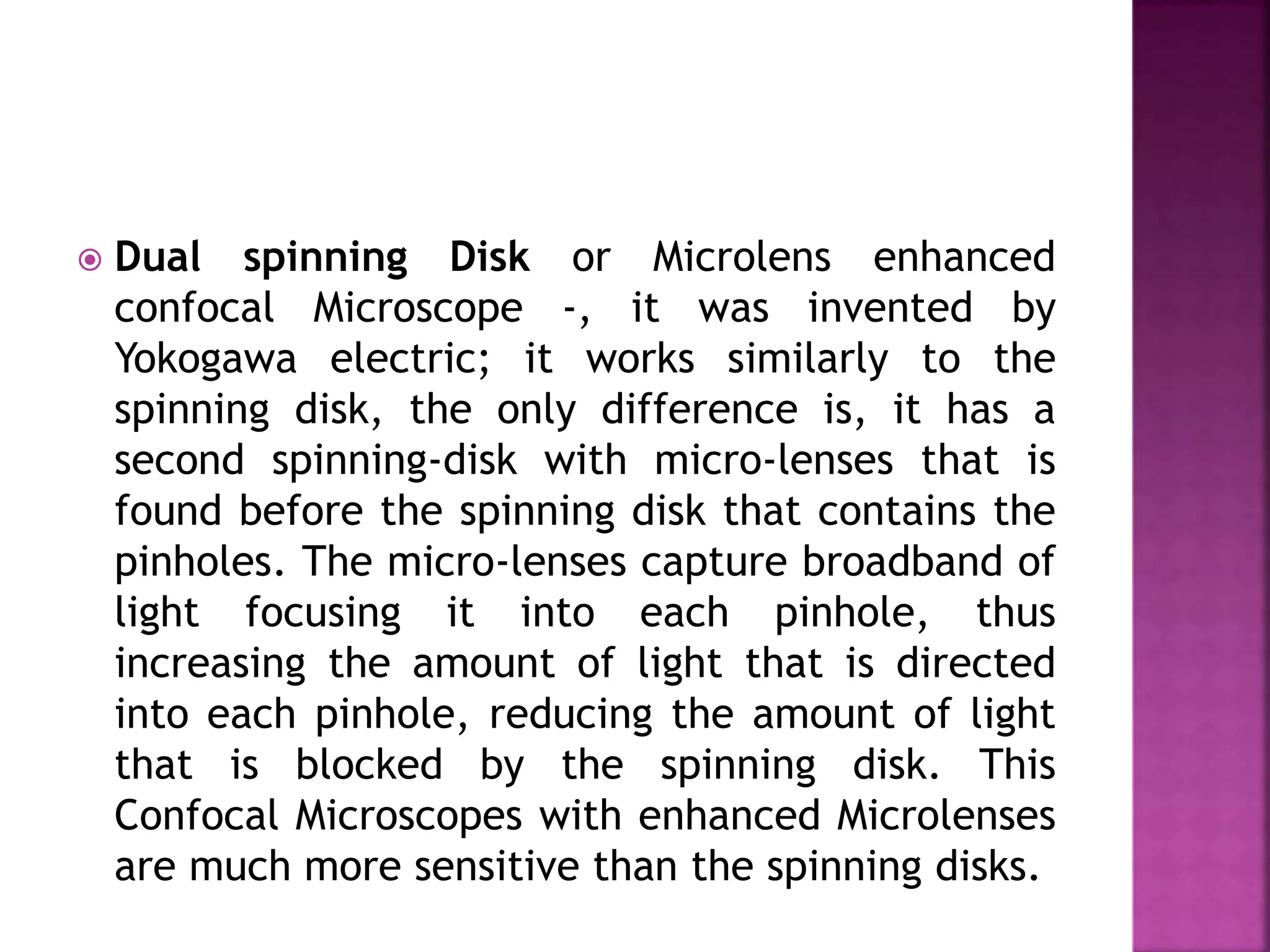The document summarizes the history and components of the confocal microscope. It describes how the confocal microscope was initially conceived in the 1950s but lacked the necessary light sources and computing power. Work in the late 1960s adapted the original concept and allowed for the examination of unstained brain and ganglion cells. Further developments in lasers and computing through the 1980s led to more practical confocal microscopes. Modern confocal microscopes integrate optics, detectors, computers and lasers to produce high-resolution 3D electronic images of samples. Confocal microscopes are now used across various fields including biology and medicine.
